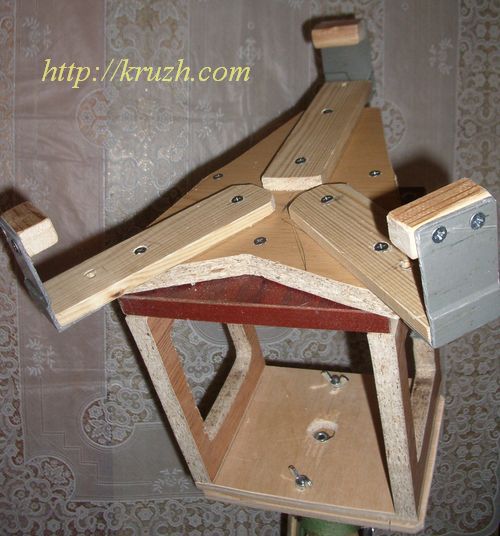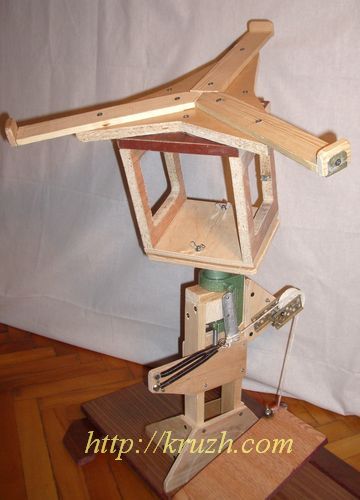A rack-“goat” has evident shortcoming – a lace maker has to rotate often a heavy bolster around all axes of gyration. Using tool like “a goat” demands outstanding physical endurance when plating takes place all over a workday. But it is completely inadmissible to burden hands busied with the skilful work.
The overload of a lace maker is eliminated when a bolster has a ball hinge with three degrees of gyration freedom. Ideally a center of bolster gravity must coincide with a gyration center. As soon as it is not practicable one must deviate from the ideal cinematic layout. Practically a bolster 1 is set on a platform 2 that is joined with the ball 3 by means a rod 4 (Fig.2.18).
In this scheme a bolster is controlled well but moving a center of gravity out of a gyration center hampers fixation of the platform. Long levers L1 and L2 arises which demand to create great strength to fix the platform at any given space position. The task becomes a little easier when ball diameter enlarges.
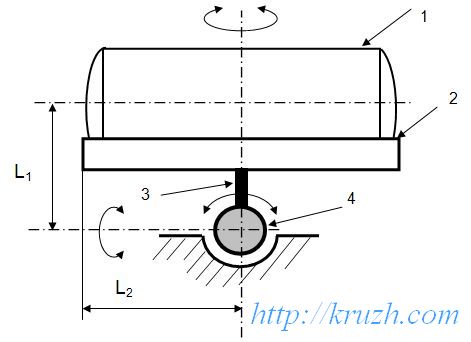
Many contrivances use a ball hinge, for instance, the rests for a plane-table and an easel, the rests for cover plating. These devices do not demand often to change position of the table. Rotations are fulfilled inside narrow angle range – about several grades. Much more diapason is needed in plating of link laces. A bolster is rotated very often, each rotation taking place in range from 10 to 40 grades.
Pillow rest having a ball hinge is invented in Vyatka province [9] about 40 years ago (Fig.2.19). This construction proves to be the best rest for them, but it is created for workshops and stays practically unknown to mass lace makers working at home.
The Vyatka rest is ideal as to bolster fixation but its controllability stays unsatisfactory. It is seen on the Fig.2.19 that fixation of the bolster tray is released by pressing brake-pedal. However the rest has nothing to return the pedal at start position.
Hence the lace maker has to pull back the pedal lever by her hand to fix the bolster again. Naturally she tries to avoid excessive movements. That is why she finds some intermediate position of lever when it is still possible to turn the bolster by hands but the bolster does not move already when the thread is being stretched. It easy to understand why all lace makers say that they do not use the brake-pedal, considering it is an excessive detail.
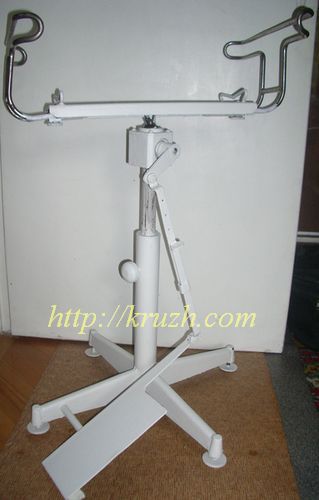
It is curious that the rest exists with the mentioned shortcoming more than 30 years! But this annoying defect of the rest can be easily corrected with pair of springs as it has been done by authors of the book (Fig.2.20). A bolster is nested in the platform 1. The platform 1 rotates due to the ball hinge 2 that is controlled with the lever 3. The spring 4 holds the lever 3 at start position with the cord 5 through the sheave 6. The hinge 2 in this position is braked and the platform 1 stays unmovable. The lever 3 is bound with the cord 7 to the sheave 8 as well. The sheave 8 can be driven with the pedal 9. An additional spring 10 and cord 11 help to return the sheave 8 at start position.
Improvements of the rest are achieved with the next transformations (Fig.2.21):
1. The control lever of the ball hinge is enlarged 3.5 times to decrease breaking strength.
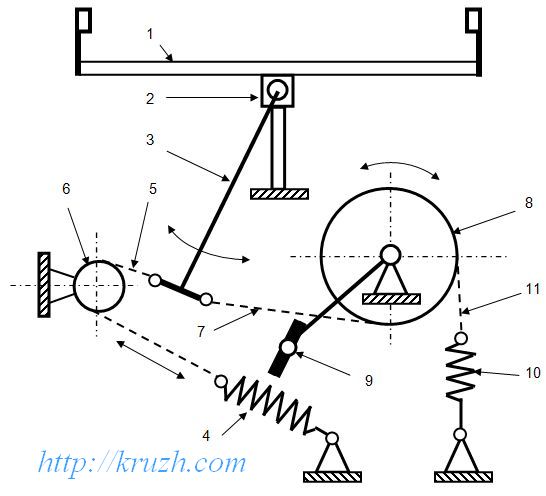
2. The staff brake-pedal and its lever are moved away.
3. Some details are added:
- – a spring that returns the control lever at start position;
- – a driving sheave with pedal to pull the lever;
- – a spring that returns the sheave at start position.
New details are mounted on the slab that is set under the cross-piece of the original rest. Adjustment of the rest is being made by means of tension of springs.
Now lace maker does not touch the control lever by hand. She presses the pedal and releases the bolster brake. Both springs stretches out and save energy. Lace maker turns the bolster at the new position and releases the pedal. The springs compress and due to released energy return movable details at their normal position. The bolster platform is being fixed hardly.
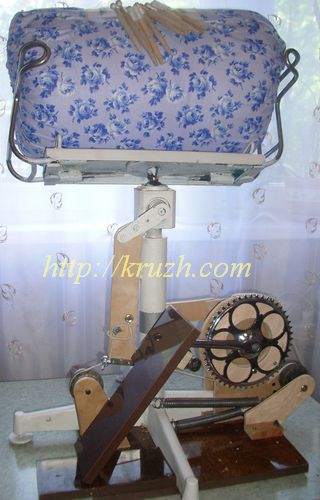
Control possibilities depend on the characteristic of the ball hinge braking mechanism (Fig.2.22). An ideal characteristic is to be linear with two distinctly expressed points of total braking and total releasing. In fact braking and releasing take place gradually. That is why the rotation angle of the control lever increases approximately from 30 to 70 grades. It means that the sheave (as well as the pedal) rotation angle increases two times.
Due to modernization the rest weight is decreased at 23% (20.8 against 27 kg). The rest would be easier, if it projected using modern materials and techniques.
The construction from Vyatka proves to be the best rest for them, but it is created for workshops and stays practically unknown to mass lace makers working at home.
The rest with a ball hinge can be made easily in domestic conditions if one happens to get ready ball joint with braking mechanism inside.
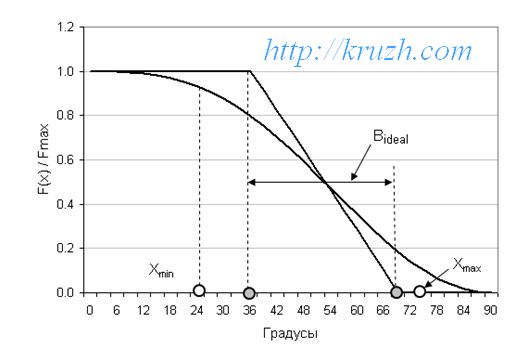
Authors of the book have got possibility to buy a hinge named “Kombihalter mit Kugelgelenk” (Fig.2.23) that is produced by the Kaindl Industrie (Germany, www.kaindl.de).
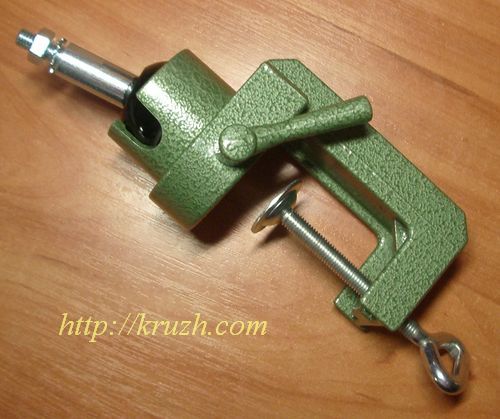
The firm prompts the mechanism for decision problems that are far from lace making but in the context of the task under discussion the hinge proves to be the main unit of the universal rest. The ready joint can be mounted into the rest after minimal completion. It is necessary only to enlarge the braking handle (Fig.2.24).
“Universal” means that the rest will fit to set different pillows, including cylindrical and flat ones (bolsters, cookies, mushrooms etc.). The slab 1 carries posts 2 and 3. The pedal 4 is set on the slab 1 as well. Movable end of the pedal 4 is joined with cord 5 to the end of the braking lever 6. The lever 6 is hold at start position with the spring 7. The cord 5 goes over the sheave 8, supported with the bracket 9. The platform 10 is set on the output shaft of the ball hinge. Any pillow can be set on the platform 10 including a bolster, “a cookie”, “ a mushroom”.
The spring 7 is stretched preliminary and the ball hinge is bracketed. When the lace maker presses the pedal 4, the lever 6 turns right and releases the hinge. The platform 10 becomes movable. When it is set at a new position, the pedal 4 is released and allows the spring 7 to squeeze. As a result the hinge becomes braked again.
The rest is shown on Fig.2.25 and Fig.2.26. The rest stands upon pair of “skis” that are destined to change the hight of a pillow lifting. The skis ase attached to the slab by means of hinges and can take two positions – vertical (upright) or horizontal (flatways). Position changing creates difference in lifting about 12-13 cm (5 inches). The slab sizes are enough to deliver steadiness of the rest when the pillow with the largest sizes is set.
Changable equipment is made as a tray for a bolster (Fig.2.27). Handles are attached on the sides of the tray to control position of pillow. Two examples of bolsters setting are shown on the photos (Fig.2.28, Fig.2.29).
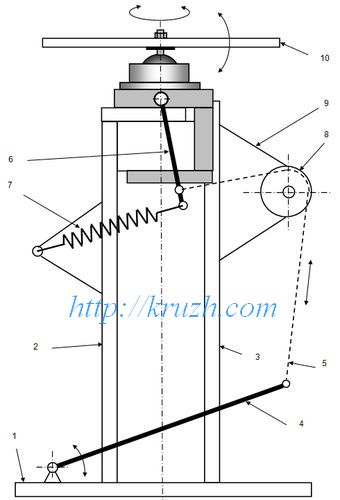
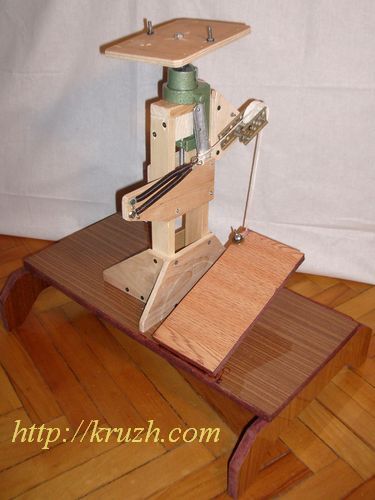
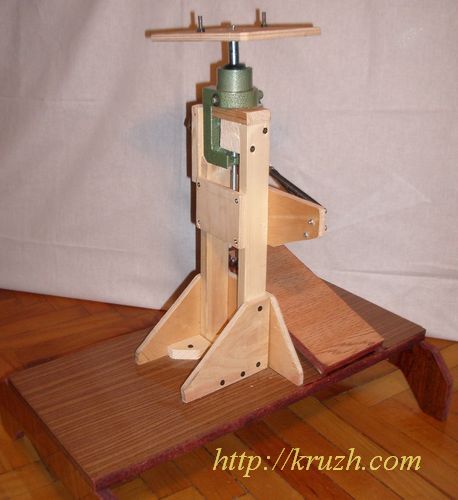
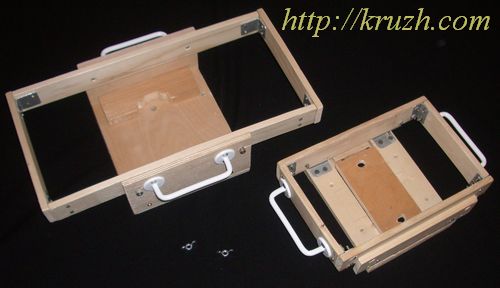
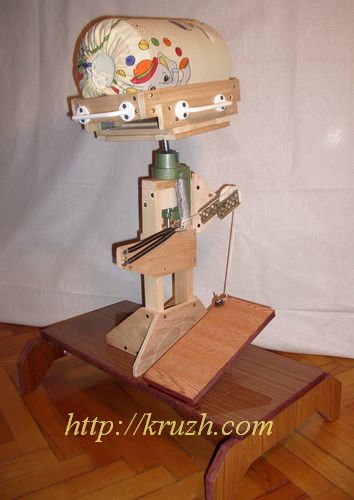
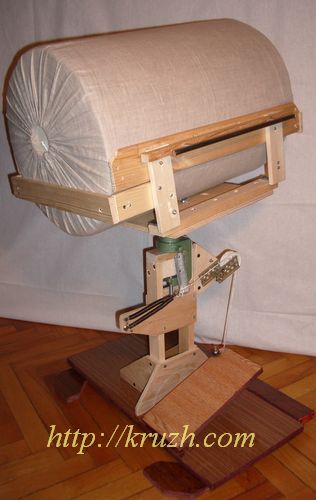
A rest for a flat pillow is made as a box with three radial holders on it (Fig.2.30. Fig.2.31). Three restrictors are attached at the ends of holders.
